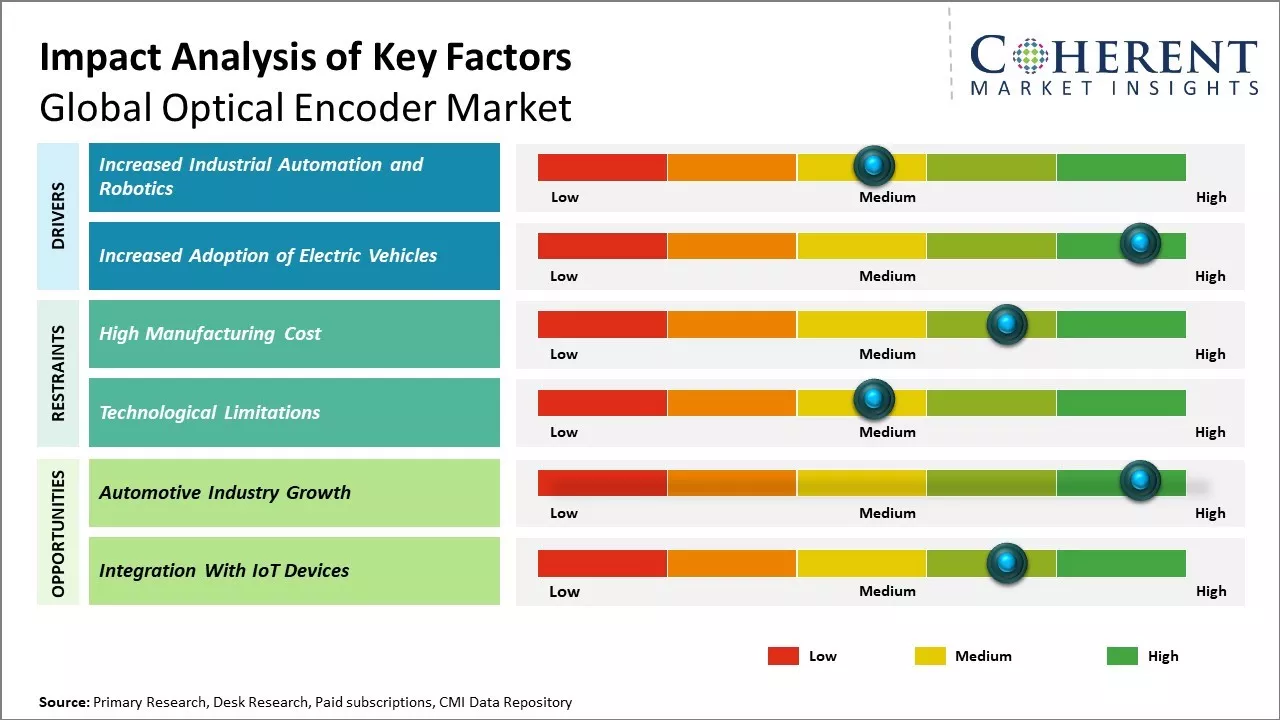The global optical encoder market is estimated to be valued at US$ 3,399.2 Mn in 2025 and is expected to reach US$ 8,051.6 Mn by 2032, exhibiting a compound annual growth rate (CAGR) of 13.1% from 2025 to 2032.

To learn more about this report, Request sample copy
The optical encoder market is expected to witness significant growth over the forecast period. The rising demand for optical encoders from various end-use industries such as electronics, packaging, healthcare, manufacturing, and aerospace & defense is expected to drive the market growth. Optical encoders offer various advantages over traditional encoders such as high resolution, accuracy, and reliability. Furthermore, increasing automation in industries and focus towards Industry 4.0 is also projected to propel the demand for optical encoders. The adoption of sensor-based technologies to enhance efficiency and reduce downtime will further support revenue generation in the coming years. However, high initial investment for the deployment of optical encoder technology may hamper the market growth to some extent over the forecast timeframe.
Increased Industrial Automation and Robotics
With advancements in industrial automation and robotics technologies, the demand for optical encoders is growing rapidly across diverse manufacturing sectors. Optical encoders are essential components that play a key role in ensuring precise motion control, feedback, and positioning required for automated industrial processes and robots. They help integrate various automated machines and robotic devices within production lines at factories to improve quality, efficiency, and minimize human errors. Growing focus on industrial automation to enhance productivity and reduce manufacturing costs is a major factor driving the need for high-precision motion control systems based on optical encoders. Major industrial robotics markets like automotive, electronics, and food & beverages are increasingly automating their assembly and production lines with robotic arms, AGVs, and other automated machines which rely on high-resolution encoder feedback for navigation and handling tasks. The widening application scope of robotics in new verticals like logistics, healthcare, and construction is also augmenting market opportunities for optical encoder suppliers. With initiatives toward Industry 4.0 revolutionizing industrial environments, the implementation of automation, robotics, and Industrial Internet of Things - IIoT solutions is expected to pick up pace worldwide in coming years, further fueling demand for robust optical encoder technology.
For instance, in March 2020, Renishaw plc, a leading engineering and scientific technology company, based in U.K., launched a new range of encoder solutions designed specifically for partial arc measurement applications.
Joining thousands of companies around the world committed to making the Excellent Business Solutions.
View All Our Clients